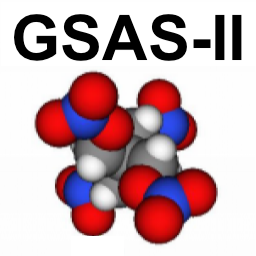
7. Notes for GSAS-II Developers¶
We welcome cooperation from people interested in developing or extending GSAS-II. The code is open source and we are happy to review submitted code or consider collaborations. The ideal mechanism for contributions is to clone the GitHub repo and then create a pull request, but small changes can be considered via e-mail.
Note that you can have multiple copies of GSAS-II installed on your computer so that you can compare running a local development version against the latest distribution. See the web page on Installing GSAS-II for code development for more details.
7.1. Developer’s documentation¶
The Sphinx documentation for the GSAS-II source code will be of significant value for people attempting to work their way through the codebase. This is found on the wonderful “Read The Docs” web site. These documents are available in a number of ways:
Access online (HTML)
Download as a PDF document (~450 pages)
Download as an electronic book (Epub format).
If you use any of the self-installer options (gsas2main, gsas2pkg or gitstrap.py), GSAS-II will be installed using https from https://github.com/AdvancedPhotonSource/GSAS-II.git. This is fine for downloading, but to be able to write to the repository, you will probably need to switch to using ssh, the command for this is:
git remote set-url origin git@github.com:AdvancedPhotonSource/GSAS-II.git
More on this is in the Installing GSAS-II for code development web page, which discusses changing the origin to your forked copy of GSAS-II.
7.2. Developing GSAS-II inside VSCode¶
Visual Studio Code (VSCode) is a free code development environment that is available on all major platforms where GSAS-II runs. Yuanpeng Zhang (ORNL) has written some notes on how to make GSAS-II run in the VSCode debugger.
Note that if you have used the gsas2main installer to place GSAS-II at ~/g2main then you can use the Python installation there (examples:
Mac/Linux, /Users/toby/G2/g2main/bin/python;
Windows, c:\Users\toby\g2main\python.exe)
to run the debugger rather than install a new conda environment as he does.
7.3. IPython Code development tip¶
One nice trick for working with GSAS-II is that if you locate a place where you want to insert code into the program, you can run commands in that environment. To do this, two prerequisite steps are needed. First, use the conda command to install iPython (this assumes you have already used the activate command, as above):
conda install ipython
Then run GSAS-II and use the Preferences command (File menu or on MacOs on the first menu, named GSAS-II or python) and set the debug option to True. One can then place a
breakpoint() statement into GSAS-II at a location where one wants to develop code. When that statement is executed, GSAS-II will enter iPython but in the local environment where your code will be executed, so you can see what variables and functions are defined and try running code that can then be placed into GSAS-II. Remember to remove the breakpoint statement when you are done.